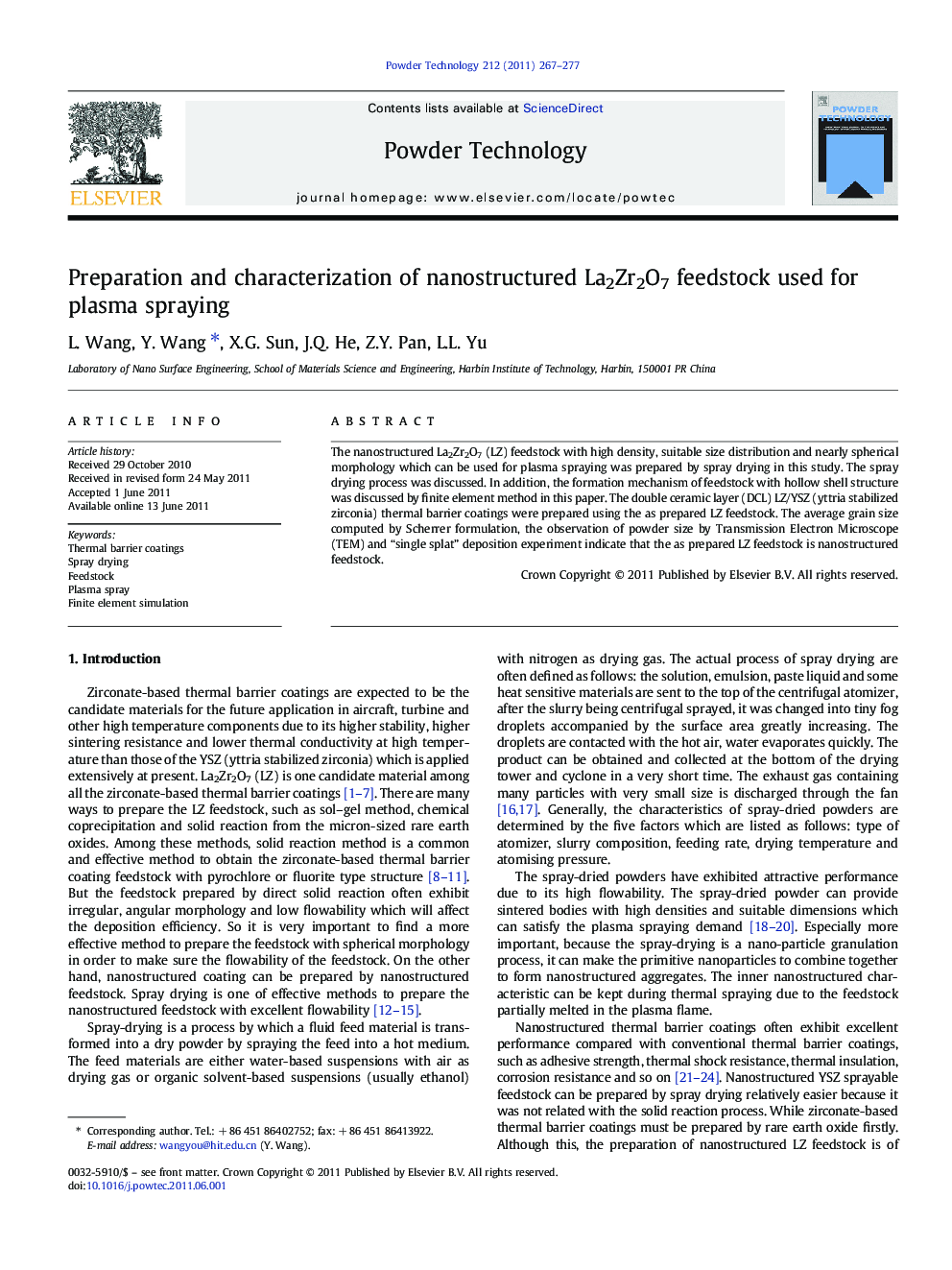| Article ID | Journal | Published Year | Pages | File Type |
|---|---|---|---|---|
| 237444 | Powder Technology | 2011 | 11 Pages |
The nanostructured La2Zr2O7 (LZ) feedstock with high density, suitable size distribution and nearly spherical morphology which can be used for plasma spraying was prepared by spray drying in this study. The spray drying process was discussed. In addition, the formation mechanism of feedstock with hollow shell structure was discussed by finite element method in this paper. The double ceramic layer (DCL) LZ/YSZ (yttria stabilized zirconia) thermal barrier coatings were prepared using the as prepared LZ feedstock. The average grain size computed by Scherrer formulation, the observation of powder size by Transmission Electron Microscope (TEM) and “single splat” deposition experiment indicate that the as prepared LZ feedstock is nanostructured feedstock.
Graphical abstractIn this paper, the La2Zr2O7 feedstock which can be used for plasma spraying was prepared by solid reaction and spray drying. The three factors (flowability, density and size) which determine the thermal spray characteristic of feedstock are discussed in this paper. The formation mechanism was proposed according to the morphology of the feedstock after spray drying. Finite element model was established to analyze the formation process of the feedstock with hollow shell structure.Explosion process of feedstock with the inner gas pore radius increasing and the SEM image of the actual feedstock prepared by spray dryingFigure optionsDownload full-size imageDownload as PowerPoint slideResearch Highlights► The preparation technique of the nanostructured La2Zr2O7 (LZ) which can be used for plasma spaying was systemically investigated in this study. ► The method of “Single splat” pattern was proposed to indicate that the as prepared LZ feedstock is nanostructured feedstock. ► Finite element simulation was employed to describe the formation mechanism of feedstock with hollow shell structure.
